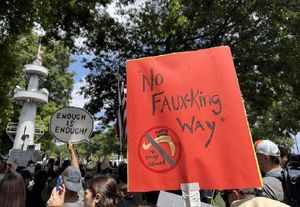In a stunning admission that has sent shockwaves through New York’s burgeoning cannabis industry, state officials have revealed that more than 150 marijuana dispensaries were mistakenly approved too close to schools—a blunder stemming from a misinterpretation of the law’s distance requirements. The error, which impacts a significant share of the state’s roughly 450 licensed cannabis shops, has left hundreds of business owners scrambling for answers and lawmakers rushing to craft a legislative fix.
For nearly three years, since New York first began licensing recreational marijuana stores, the state’s Office of Cannabis Management (OCM) had been using what seemed like a straightforward method to enforce the legal buffer between dispensaries and schools: measuring the distance from the door of the cannabis shop to the door of the nearest school. But as the Times Union and NBC New York report, this method was fundamentally flawed. The law actually requires that the 500-foot distance be measured from the edge of a school’s property line, not its entrance.
“To give you this news, and for the weight of it, I am incredibly sorry,” Felicia A.B. Reid, acting executive director of the OCM, told affected business owners in a notice last month. The news, delivered with little warning, was described by Osbert Orduña, owner of The Cannabis Place in New York City, as akin to dropping “a grenade in the laps” of shop owners. Orduña’s dispensary is now considered too close to a nearby preschool under the correct interpretation of the law.
The fallout has been swift and widespread. Nearly 90% of the affected shops are located in New York City, with dozens more scattered across the state. According to NBC New York, about 60 dispensaries—mostly in the city—were licensed using the incorrect measurement. An additional 40 shops have licenses but have yet to open their doors, and almost 50 other businesses are awaiting final approval based on the same mistaken system.
The OCM’s admission has left many business owners in a precarious position. They have been told they can remain open for now, even if their licenses have technically expired, as long as they file for a renewal. Still, the uncertainty is palpable. Jillian Dragutsky, who opened the Yerba Buena dispensary in Brooklyn just months ago, voiced the anxiety shared by many: “How do you grow your business not knowing where you’re going to be a few months from now?”
The legal limbo has practical consequences beyond just location. As Dragutsky pointed out, the ambiguity surrounding the validity of these dispensaries’ licenses jeopardizes their ability to secure banking services, insurance, and inventory. “A dispensary’s ability to bank, get insurance and purchase inventory” is now in question for many operators, she emphasized.
Recognizing the gravity of the situation, Governor Kathy Hochul has called the school proximity problem “a major screw up”—a rare and candid admission from the state’s highest office. “These people have worked hard. They’ve waited a long time. They put their life savings into something that they thought was going to help them support their families,” Hochul said. “So what I’m been doing is, first of all, reassuring them that you’re going to be OK. Secondly, we need to get the law changed to have a fix.”
To that end, lawmakers are now considering a bill that would align the distance rules for cannabis shops with those in place for liquor stores, reducing the required gap from 500 feet to 200 feet. This legislative fix, if passed, would allow most of the affected shops to remain in their current locations, sparing them the costly and disruptive process of relocation. Governor Hochul’s office and state regulators have pledged to work closely with the Legislature to protect existing businesses.
But there’s a catch: the New York State Legislature isn’t scheduled to reconvene until January 2026, leaving business owners in a state of limbo for at least several more months. In the meantime, the state has set aside a fund that will provide up to $250,000 for each business that is forced to relocate as a result of the error. While this financial support is a lifeline for some, many owners say it does little to ease the uncertainty or compensate for the disruption to their operations.
The roots of the problem run deep. An internal review of the OCM, released last year, painted a picture of an agency struggling with inexperienced management and shifting licensure rules. The state’s legal marijuana program has already faced a slow and rocky rollout, legal challenges, and regulatory gaps that have allowed an illicit market to flourish alongside the regulated one. Critics, including many business owners and industry advocates, have placed much of the blame squarely on the OCM for not identifying the measurement issue sooner.
“The way that they executed this was a complete and utter failure in leadership,” Orduña said, echoing the frustration of many of his peers. The OCM, for its part, has said that businesses can obtain “proof of a valid license or a letter of good standing to operate” by contacting the agency—a stopgap measure that offers some reassurance, but hardly the long-term certainty that entrepreneurs crave.
The implications of the error extend beyond the immediate crisis. The misstep has eroded trust in the state’s ability to effectively regulate the cannabis industry, raising questions about oversight and accountability. For many, the episode is just the latest in a series of stumbles that have hampered New York’s efforts to build a robust, equitable legal marijuana market.
Yet, despite the setbacks, there’s a sense among some industry insiders that this could be a turning point. The urgency of the crisis has forced lawmakers, regulators, and business owners to confront the flaws in the system head-on. As Governor Hochul put it, “We need to get the law changed to have a fix.”
Until then, hundreds of dispensaries—representing millions of dollars in investment and countless jobs—are left to navigate a landscape marked by uncertainty, frustration, and hope for a legislative solution that will allow them to continue serving their communities. As the state works to correct its course, the outcome will serve as a critical test not just for New York’s cannabis program, but for the broader effort to regulate a rapidly evolving industry with fairness and clarity.




